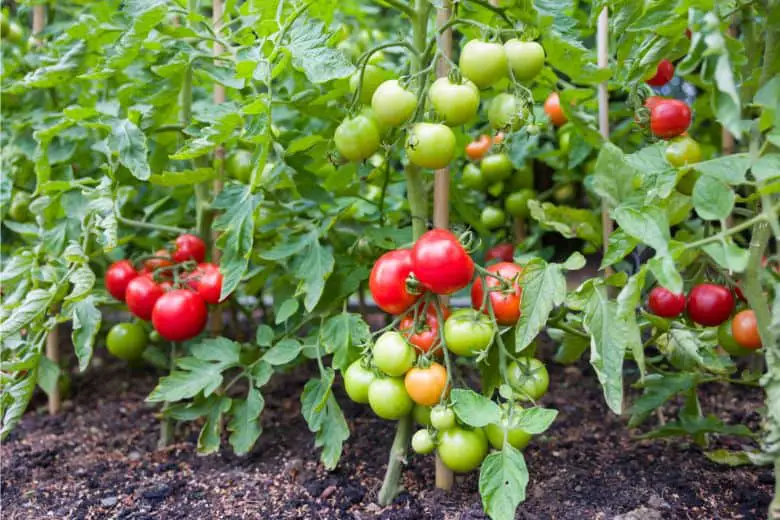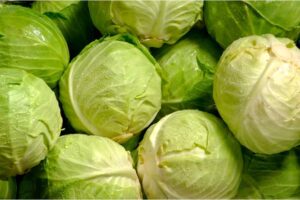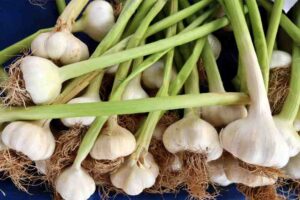
Tomatoes are a popular vegetable for growing in South Carolina (Sc). Their versatility and abundance of harvest make them a rewarding crop for many SC gardeners. Planting tomatoes in the right season is essential for a bountiful harvest.
The best time to plant tomatoes in South Carolina is from mid-April to mid-May. To get the most out of your tomatoes, make sure to start your tomato plants indoors about four to six weeks before you plan to transplant them outdoors.
Once outdoors, keep an eye on the temperature and soil moisture. Tomatoes thrive in warm soil and need about one inch of water per week. With proper care and attention, you can enjoy delicious homegrown tomatoes throughout the summer months!
Determining the Best Planting Window
The ideal window for planting most tomato varieties in South Carolina lasts from mid-March through mid-May. These months allow enough time for the tomatoes to mature before the heat of summer sets in fully. Keep in mind that coastal areas tend to be slightly warmer, allowing for an earlier start in March. Inland and mountain regions are cooler, favoring a later May planting.
# Within this window, aim to get tomatoes planted 4-6 weeks before the average last spring frost date for your area. USDA planting zone maps can provide a guideline for frost dates. Zone 8 areas like Charleston typically see their last spring frost in mid-March. Zone 7 regions like Columbia experience frost into early April.
# You’ll want to get seeds or transplants started early enough that the tomatoes have time to produce fruit before the summer heat becomes excessive. Aim for an early June harvest deadline from planting. Pay attention to localized microclimates that could make your specific site trend earlier or later.
Selecting Tomato Varieties
When choosing tomato varieties to plant in SC, consider disease resistance, heat tolerance, and your intended use for the harvest. Some top picks well-adapted for the Palmetto State include:
- Cherokee Purple (heirloom): robust flavor, indeterminate vines producing through summer
- Mountain Princess (hybrid): reliable producer of pink fruit, resistance to blossom end rot
- Solar Set (hybrid): determinate bush habit, high yields of red tomatoes even in the heat
- BHN 968 (hybrid): large fruit resistant to tobacco mosaic virus and verticillium wilt
- Beefsteak (heirloom): massive-sized slicers, usually grown as annual
- Red Currant (cherry): continuous harvest of 1-inch fruits ideal for snacking
Always check seed packets or transplant tags for details on days to maturity to further dial in your planting schedule.
Planting Tomato Transplants
If starting with transplants rather than direct seeding, follow these steps for planting into the garden:
Step 1: Select a spot in full sun that receives at least 6 hours of direct light daily. Amend the soil with compost or other organic matter 2-4 weeks prior.
Step 2: Dig holes at least 1 foot wide and deep, spaced 2-3 feet apart in rows at least 4 feet apart.
Step 3: Remove transplants from their containers, disturbing the roots as little as possible. Position plants at the same depth they were growing previously.
Step 4: Backfill holes with native soil, firming gently to remove air pockets. Construct a small moat around the base to direct watering.
Step 5: Water thoroughly, then apply a 2-3 inch deep mulch ring of straw to conserve moisture.
Step 6: Stake or cage plants at the time of planting to provide the support that will be needed as fruit forms.
Step 7: Monitor new plantings daily to ensure adequate moisture as roots are established in garden conditions.
Starting Seeds Indoors
For those desiring a longer harvest or who plant earlier, starting seeds indoors 6-8 weeks before the last expected frost can help get a jumpstart. Sow seeds 1⁄4 inch deep in individual biodegradable cells or containers. Provide bottom heat of 70-80°F for germination.
Monitor soil moisture daily, avoiding both drying out and waterlogging. Provide bright light for at least 14 hours daily, using supplemental lighting if needed. Harden off seedlings for a week prior to planting outside. Follow the care directions for transplants above.
Aftercare in the Garden
Some key aftercare tasks to focus on with your new tomato plants include:
- Watering – Apply 1-1.5 inches per week, more in heat or with sandy soil. Use soaker hoses or drip irrigation to reduce disease risks.
- Fertilizing – After initially planting, side dress with compost or fertilizer high in phosphorus and potassium monthly through July.
- Weed control – Hand-pull or cultivate weeds competing for nutrients and water around bases.
- Staking/caging – Train and tie vines to support weekly as they grow to prevent fruit from sitting on the soil.
- Pruning – Remove lower leaves and laterals below clusters once plants reach 4-5 feet. This directs energy to fruiting.
- Pest/disease monitoring – Be on guard for hornworms, blossom end rot, and early/late blight, treating issues promptly.
With regular care and protection from pests and weather extremes, your SC-grown tomatoes should reward you with bountiful harvests from summer into early fall. Be ready to enjoy the fruits of your labor!
Common Challenges in South Carolina
While tomatoes can thrive in many areas of the Palmetto State with the right care, there are a few production challenges gardeners may face:
1. Heat stress:
High temperatures above 90°F can reduce yields or cause blossom drop. Early morning watering and afternoon shade help. Choose heat-tolerant varieties.
2. Late blight:
This fungal disease thrives in wet conditions. Practice good sanitation, allow for airflow, and apply a fixed coppers fungicide at first signs.
3. Blossom end rot :
A physiological issue caused by inconsistent watering, it causes sunken lesions. Maintain even soil moisture to avoid.
4. Nematodes:
These micro predators weaken roots and transmission of diseases. Rotate crops, solarize soil, or plant marigolds or rye cover crops to help control populations.
5. Pests:
Keep a lookout for hornworms, stink bugs and Colorado potato beetles. Hand-pick large pests or spray neem, spinosad, or Bt as needed.
6. Drought:
Even with drip irrigation, water needs rise dramatically in midsummer. Mulch well and water deeply 1-2 times per week if rain is lacking.
Adapting your tomato-growing methods based on conditions, following a preventative approach, and choosing resistant varieties can help you beat these challenges.
Conclusion
With the right information, South Carolina gardeners can certainly grow flavorful tomatoes through even the warmer months of the year across much of the state. By planting within the prime windows outlined and providing aftercare, you’ll be rewarded with an abundant summer harvest of homegrown goodness. Follow these guidelines for success with your Palmetto State tomatoes!





